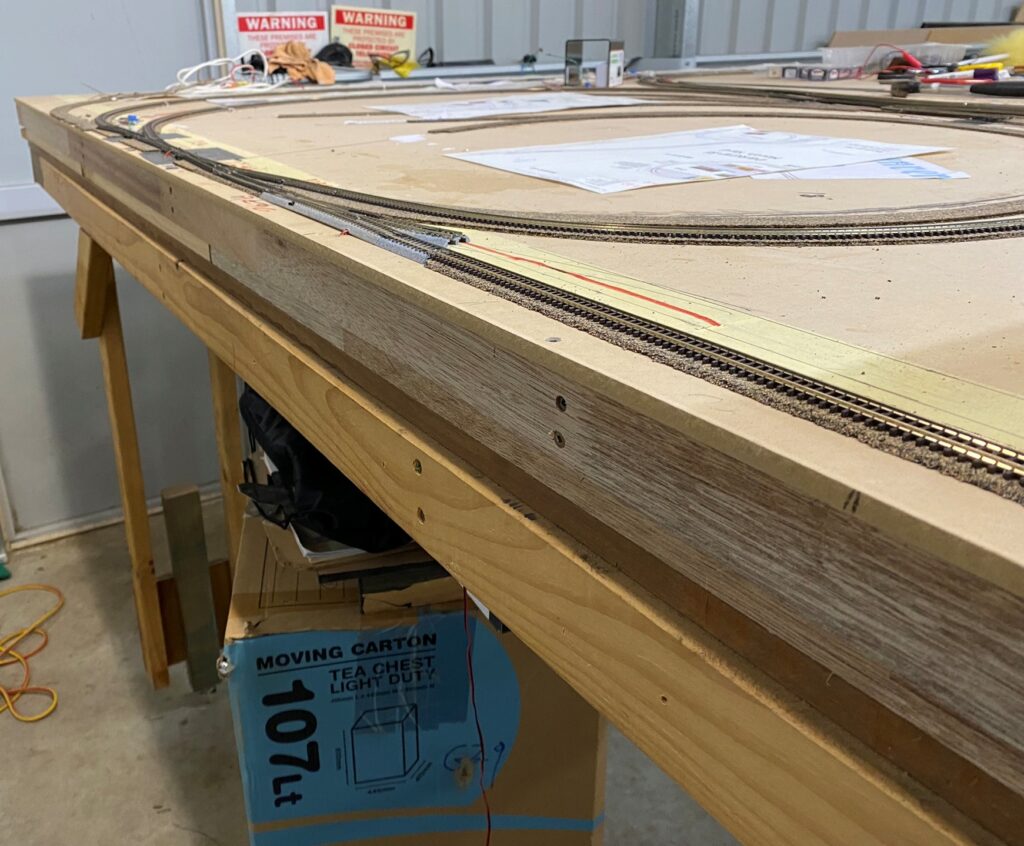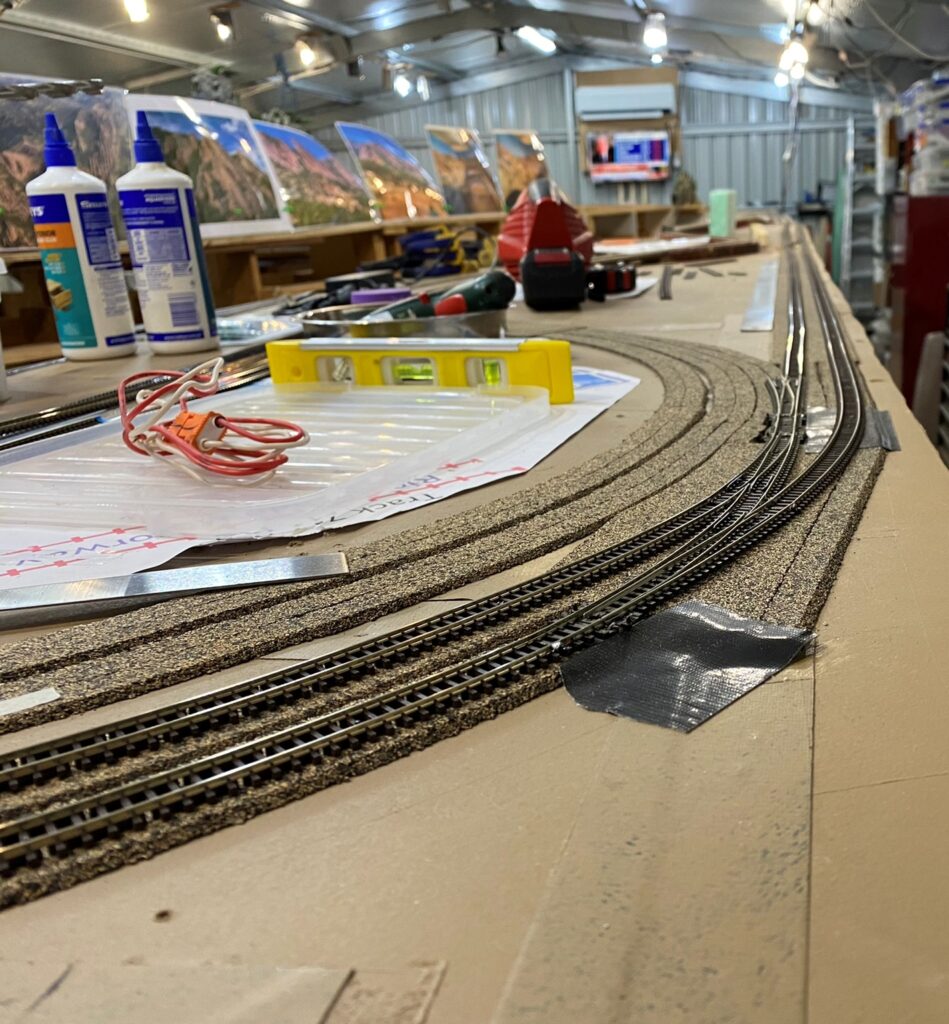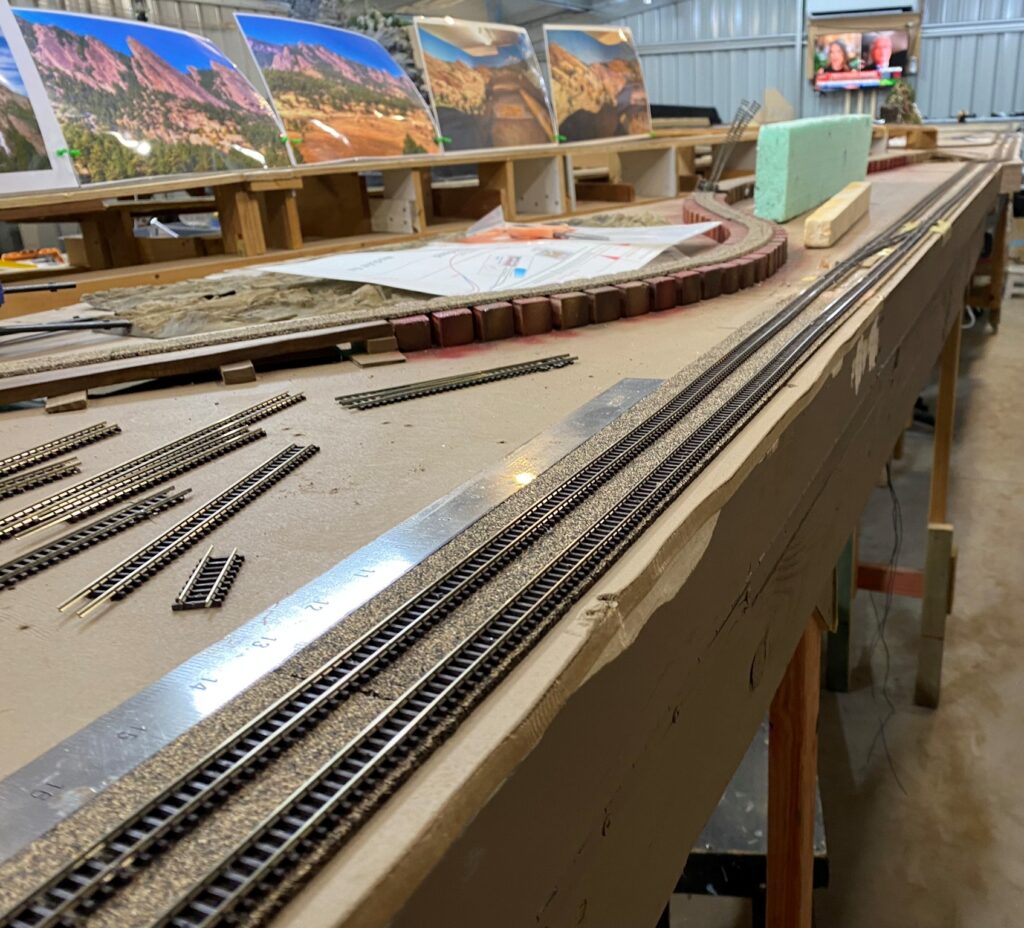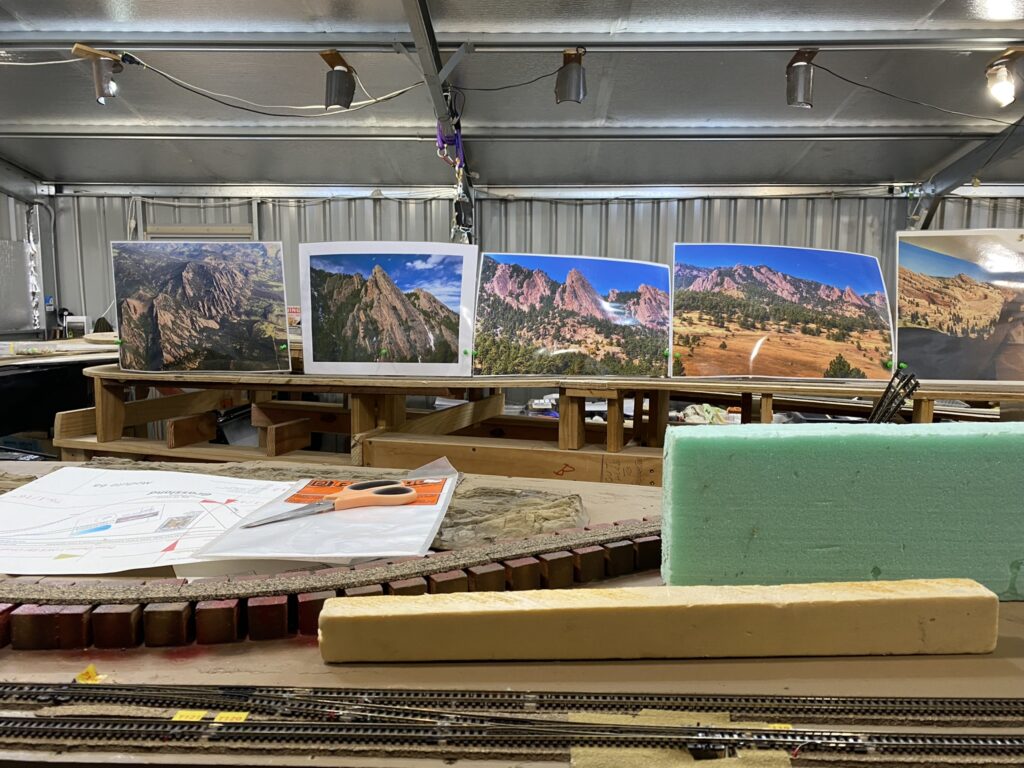Another "Final" Track Plan
Recording the progress of building the Denver’s RailRoads N Scale layout
All genuine posts are welcomed and will be acknowledged. Please submit your first post by email to: dennis@denversrailroads.com
Another “Final” Track Plan
A while ago I decided to replace the East Denver Belt Line on Module 8 with the Rio Grande (D&RGW) main line from Denver to the East Portal of the Moffat Tunnel which previously had been mainly hidden trackage. So far so good.
However, I really did want to keep the industries of The East Denver Belt Line (aka Northwestern Terminal Railroad or NTR), a sprawling group of Denver industries between Utah Jct. at the north end of the D&RGW North Yard and Commerce City as can be seen in the map shown at Denver-Belt-Line-Map.pdf (denversrailroads.com). However, many of these industries were not established in the 1950’s and 60’s so I am really only concerned with those industries that were in existence back when Denver’s RailRoads is set (1947-1967), including:
- Conoco (Continental Oil) Refinery. Built 1930.
- Brannan Sand & Gravel. Est. 1906. Manufactures Aggregates, Asphalt Paving and Concrete.
- Weyerhaeuser Distribution Center. Est. 1921. Suppliers of building materials.
- Eaton Metal Products. Est. 1924. Fabricates a wide variety of vessels & tanks.
- Kopper’s. Est. 1923. Manufactures treated wood products
- Central Fibre Products Co. Est. 1931. Manufactures of packaging solutions.
- Denver Union Stockyards including:
- Denver Union Stock Yard Exchange Building. Built 1881;
- The Colorado Packing and Provisions Company, aka Armour & Company. Built 1917;
- Swift & Company, who began operating in the McConnell Building in 1951.
In the event it was not too difficult a task as the Rio Grande North Yard is on the west side of Denver and the Union Pacific’s 36 St. Yard and Pulman Yard were on the east side. As the East Denver Belt Line ran from the west to the east planting these industries between the two made geographical sense and will create a natural scene divider. I had no choice but to use modelers license and extend the Belt Line, with three of the industries, into Burlington territory where there was some free real estate.
If you are familiar with Denver city, you will know that the CB&Q 38 St. Yard is also located between the D&RGW and UP yards. But apart from the lace of space it would be one yard too many for a model railroad. Consequently, the CB&Q will have to share space with subsidiary Colorado & Southern’s Rice Yard which in the 1950’s was located adjacent to Denver Union Station.
To view the latest “final” track plan go to document (denversrailroads.com).
A Change of Direction
I had planned to complete the South Denver module 1, aka as the Joint Line Return Loop & Burnham Shops, to operational stage. Unfortunately, the size of the wiring job has somewhat overwhelmed me, largely because:
- I wired all of the block detectors with the baseboard in a “pop-up” vertical position and did not take into consideration access after it was lowered back onto it’s normal horizontal position.
- Wiring individual DCC accessory decoders for 40 turnouts is a long soul-destroying job.
- I use solid wire which has many advantages. The one major disadvantage is that the one strand can easily break.
- For economic reasons most of the turnouts have been re-used from previous layouts. This has led to questionable trackwork.
After a period of indecision, while I spent my time testing Locomotives on the new test loop of track (see first photo below) I decided that I would build west from the test loop to the Grand Junction return loop.
What I have done, and can be seen in the following photographs, is build the CB&Q and UP main line from the test track loop all the way to a single loop of track, being part of the Grand Junction loop. I have installed all of the main line turnouts as I went so that I can build on from the main line as required.



The UP main line is on the left and the CB&Q and Rio Grande main lines are on the right.








